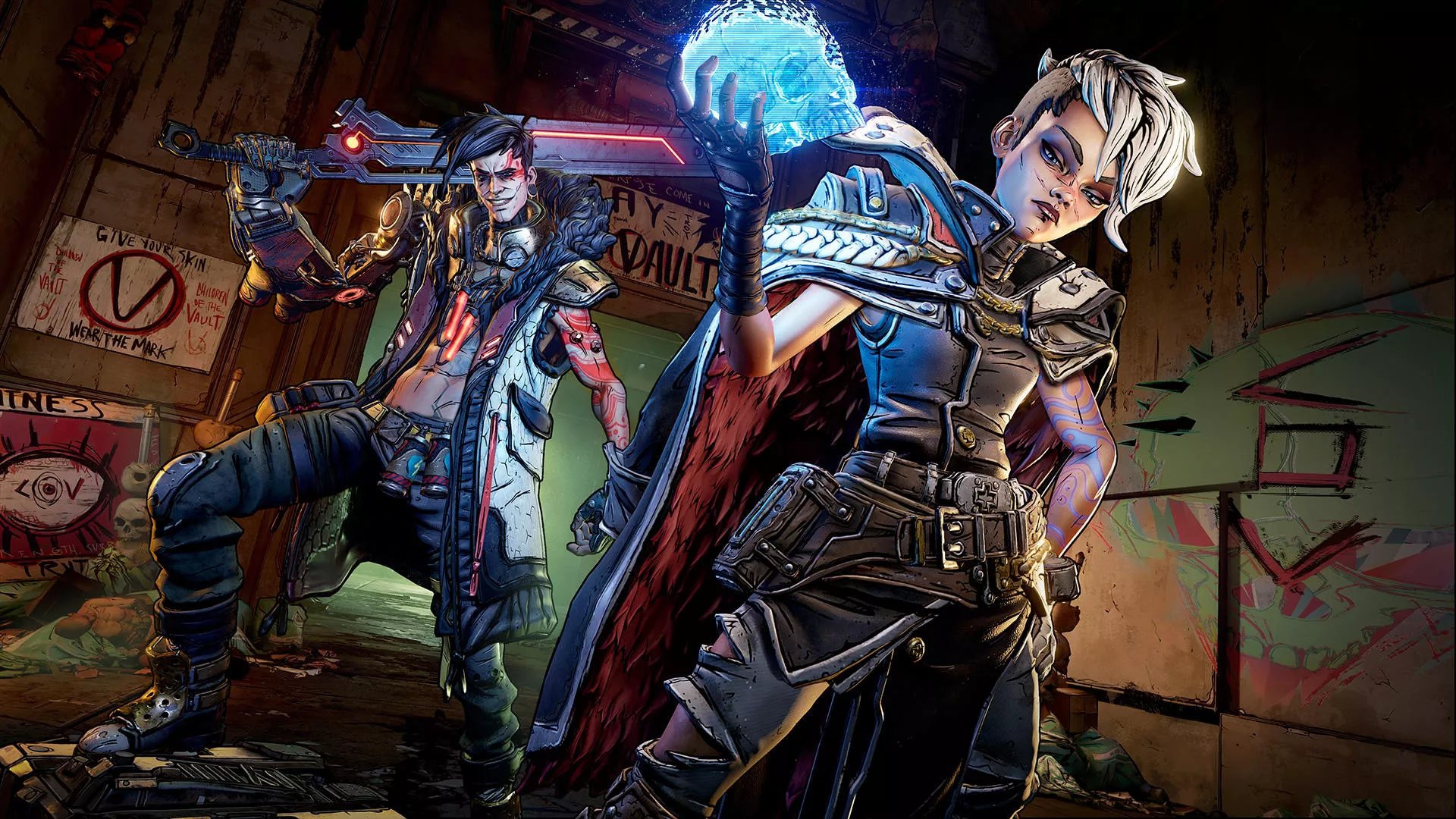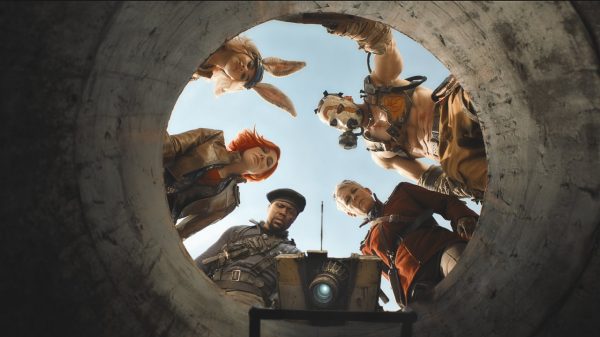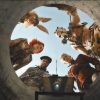Alongside my quite lengthy preview of Borderlands 3, I got to speak with not one, but two quite notable team members that have been working on the latest Borderlands game (that’s right, the Pre-Sequel Reboot Remaster). The two people I got to chat with were Lorien Meggersee, the Associate Producer for Cinematics and Animation, and Matthew Higgins, a Level Designer and Mission Designer. These are both very different roles, but chatting with them about the processes required to build Borderlands 3 was actually a pretty cool experience. Learning how these games are built gives an insight into the complex craft that is game development, and an appreciation of just what it takes to get a big title into shape. Let’s dive in…
WellPlayed: [To Meggersee] What interesting techniques did you use to replicate the cel-shaded, comic-esque art style?
Lorien Meggersee: For animation, we are pretty lucky and have on-site mocap facilities so we get to try a lot of, sort of, crazy moves and we have people with backgrounds in stunts and stunt doubles and stuff like that. So we throw down some mats and we try to figure out some of the crazy things we can do, then the animators take that data and adjust i-
Matthew Higgins: Dial it to 11.
LM: Yeah haha. We don’t really want people doing backflips off twelve-foot heights, so we only do it off like a couple of feet. Having the really talented physicality of mocap people or the designer will give us some really interesting ideas for characters and we have to do, not so much using mocap but more hand key stuff.
This means that rather than relying solely on motion capture for the animation, mocap was used as a foundation for hand key animation to be built off.
MH: Big dynamic poses and such.
LM: Yeah big dynamic poses, we get a lot of influence from the designers that say, “I want a character that does this!” and the animators will kind of sit down and say “what about this?” so it’s all just a matter of iterating from the people around us and kind of figuring what looks great and what makes a really great silhouette. It’s just a lot of trial and error and talent from our amazing animators.
WP: So how much of the game, would you say, is mo-capped and how much is hand key stuff?
LM: I don’t think there’s really a definite number.
MH: Getting the dogs in for the skags was pretty tough… Nah we didn’t do that hahaha
LM: Hahah but no I don’t think there’s a definite amount. We try and be very clever about what we do for what. So some things are going to be really great to mocap because people are easy to mocap! But we don’t take just straight mocap data, we actually adjust it and go on with that. Then there’s the hand keying, so anything that has four legs, yeah we aren’t really going to put anyone in a suit for that, although there were some very interesting experiments, very early on, on what we could and couldn’t mocap. Let’s just say some things will never see the light of day on that haha. While I wouldn’t say there’s a definitive number on that, though, it’s fairly equal I’d say.
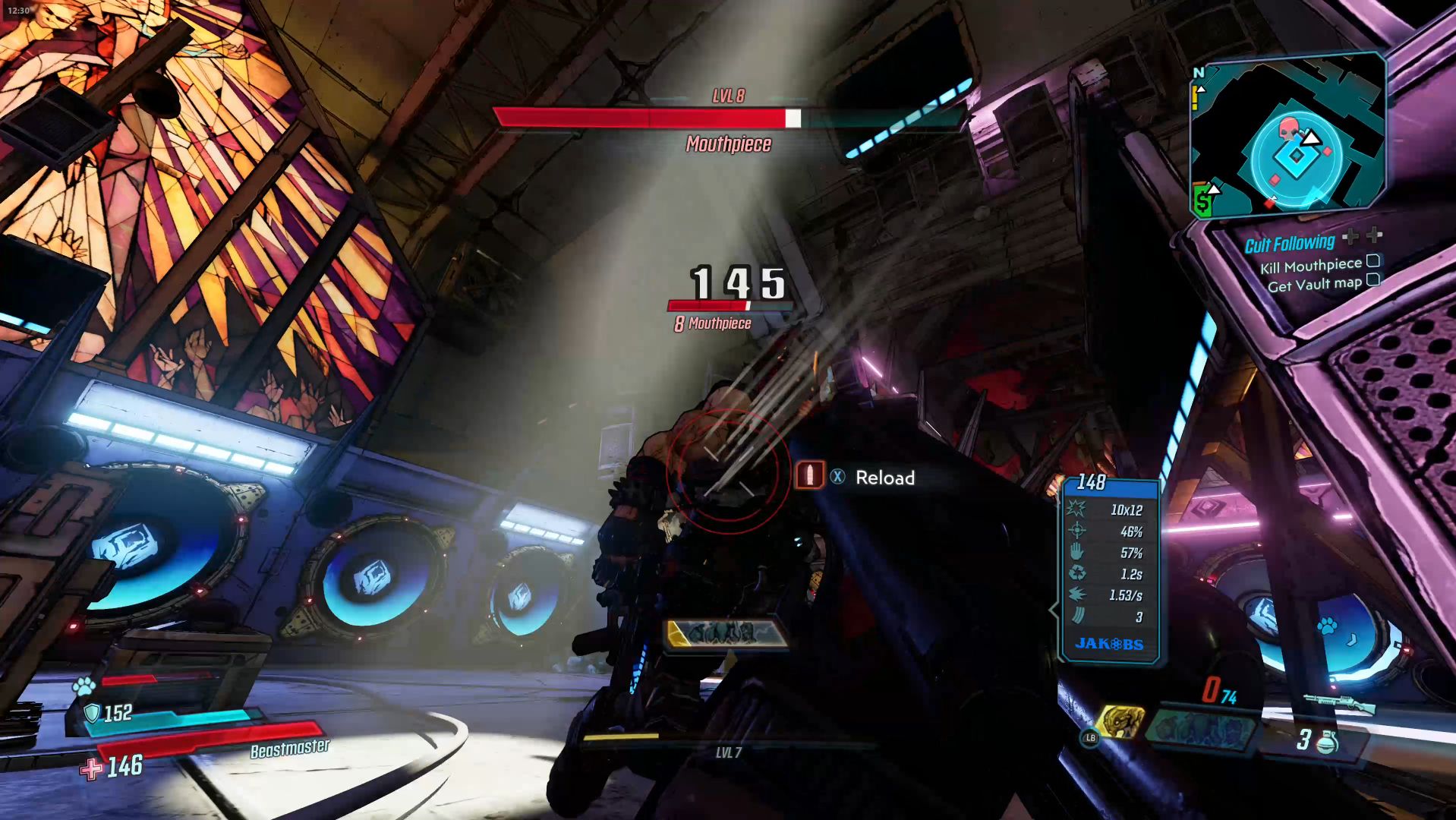 WP: How big is the animation team?
WP: How big is the animation team?
LM: So in our San Francisco office there are about eight of them, and then we also worked with GSQ [Gearbox Studio Quebec] office which has about half a dozen, plus there was some outsourcing done as well. With our animation teams, some of the guys have been around for like 20 years. They were some of the first hires for Gearbox, so they have been around for a long time so they really understand what makes Borderlands animation ‘Borderlands animation’, so we are quite lucky with them.
WP: What are the challenges of animating and directing such over-the-top, bombastic characters?
LM: I listen to the animators talk about, in terms of challenges, just figuring out how we have these crazy animals and creatures that you don’t really have in real life, so how do you make those move? And how do you make something so fantastical still look proper to the eye, if that makes any sense, so it still looks like it belongs in the world, not something that you look at and think “that looks weird”? I think that’s the main challenge, just finding the right balance of like crazy, but not so crazy that it kind of breaks your immersion.
WP: When it comes to animating the cinematics and stuff, what’s the process for doing stuff like that? Because when you look at a cinematic, it is much more intimate and there is much more detail put into the animation than in just general gameplay.
LM: Yeah so a cinematic is a long process that starts really early on in game development cycle and kind of finishes towards the end, so our writers will give us a script and we’ll do a read-through of that script. We’ll look at it and kind of figure out how it’s going to move, then we need to figure out layout – how do the cameras look, where are those going to go.
MH: How the level is laid out around it.
LM: Yeah we work very closely with the level designers because if a level designer is like “oh this is the space” and they start adding elements, you might end up having a character walking through a cinematic and there’s a tree there all of a sudden! It’s a bit like making a play but every night something is different and so you always have to make sure that you are coordinating. Then we do the mocap and stick the raw data in there and we kind of watch it and it looks crazy. We also do a lot of animatics and storyboarding as well and that really helps form the character and then our amazing voice team, they’ll get the voice actors in and they’ll do their lines and we then put those in and make sure they match up. So it is a big long process and at the end, we get these amazing cinematic moments.
MH: Yeah right at the end the animation is all cleaned up, some of our lighting guys in our lighting team will go in and make sure the cinematics are lit just right.
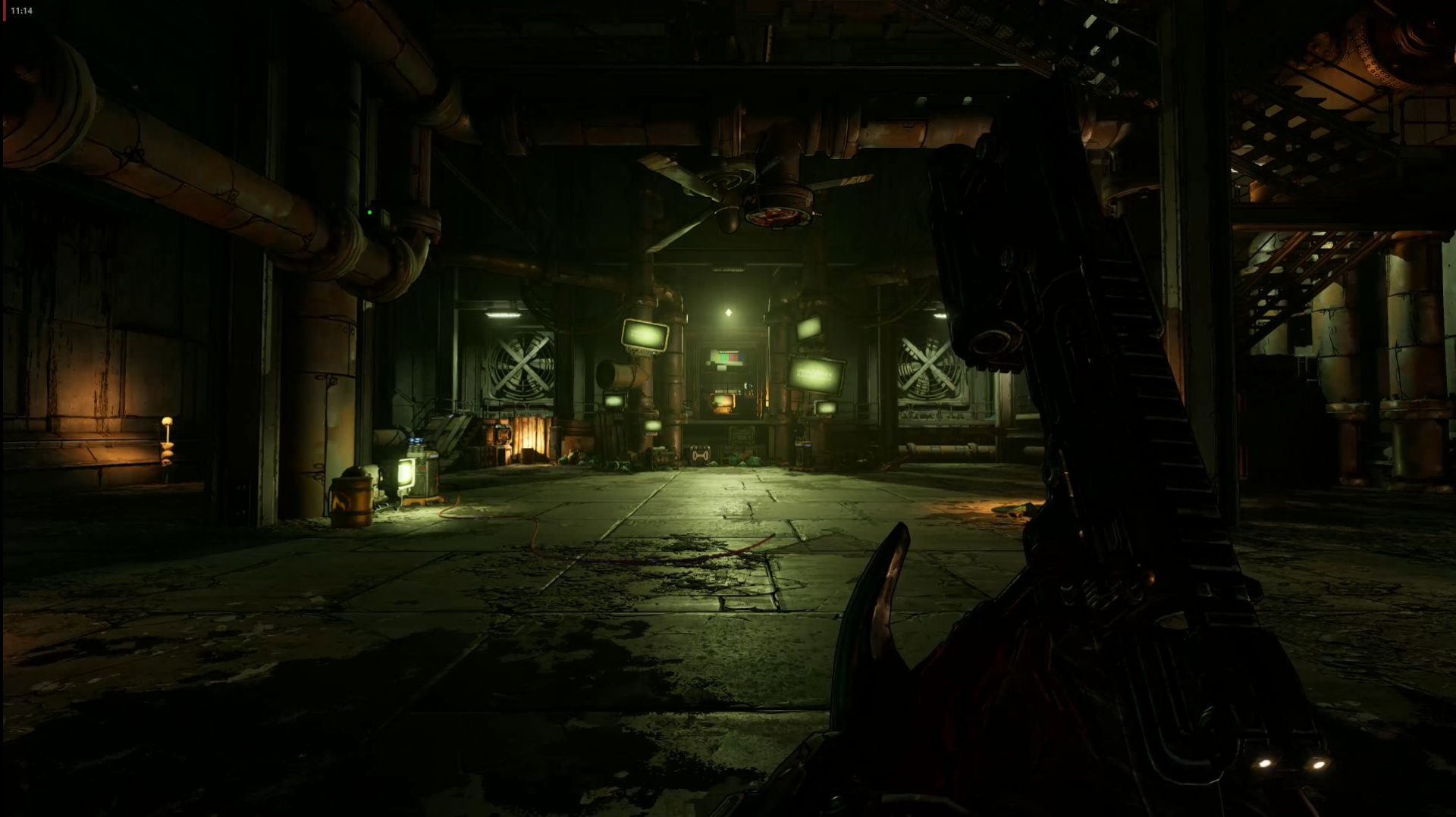 WP: Was there any inspiration for the animations from real people? People that had the over-the-top movements and body language.
WP: Was there any inspiration for the animations from real people? People that had the over-the-top movements and body language.
MH: Animators always use reference but yeah
LM: I can’t really think of any sort of specific famous reference that might have been used.
WP: [To Higgins] Now some questions for you! What techniques did you use to give the player directionality in an open-world setting?
MH: Oh, that’s a good one. In the zones, we want to make it very clear where bandits have set up and, when players look over, we want to make things stand out and encourage players to go explore a certain region. However, we use a lot of the mission objectives to kind of pull players through, giving them hints along the mainline of where to go next. Just visually, we try to light things and angle things from which direction the player’s going to come at, so you want to invite players into places like an entrance into a new bandit camp or “oh this building is explorable” as there’s a door wide open over there, yeah!
WP: With the comic, cel-shading aesthetic that Borderlands is known for, does that hinder or help at all when it comes to designing levels?
MH: I think it helps because we can exaggerate features of the environment much more than if we wanted to be more photorealistic or more real than Borderlands is, so we put crazier colours in and crazier lighting in to draw the player’s eye.
WP: Speaking of lighting, how do you use light and darkness for guiding players on where to go?
MH: Players tend to go towards the light… like moths… haha. Wherever there are interesting things to explore, we really focus the light on those areas and a lot more detail in the lighting as well, so more light sources. If there is a less detailed area, then we might not put so much light in there which will just hinder players and say “yeah there’s not really that much to see over in that direction.”
WP: What are the challenges of designing closed-in spaces, with branching paths, to a more open area?
MH: So we wanted to make very clear entrances and exits and try to avoid areas that players can explore, like hopping out of what should be a closed-in space. We don’t want them jumping out and seeing what’s behind the level.
WP: So you’re stopping me… haha
MH: Hahaha yeah
WP: What were the areas you worked on specifically and what were the challenges of those areas?
MH: I don’t think I’ll go into spoilery territory, but I guess something I liked to play with more which wasn’t in the previous games is the mantling. It adds a lot more verticality into the combat spaces, giving the players more options on how they will tackle a combat space. Either mantle up to flank enemies or jump down and do a butt stomp, which we brought back from the Pre-Sequel, or just more higher up areas for players to explore with more loot chests and hidden objectives or more enemies to kill.
WP: With the increase of verticality and the extra manoeuvrability of the player, has that allowed the art team and the level designers to work more closely together to make more effective use of 3D space?
MH: Yeah definitely more vertical space!
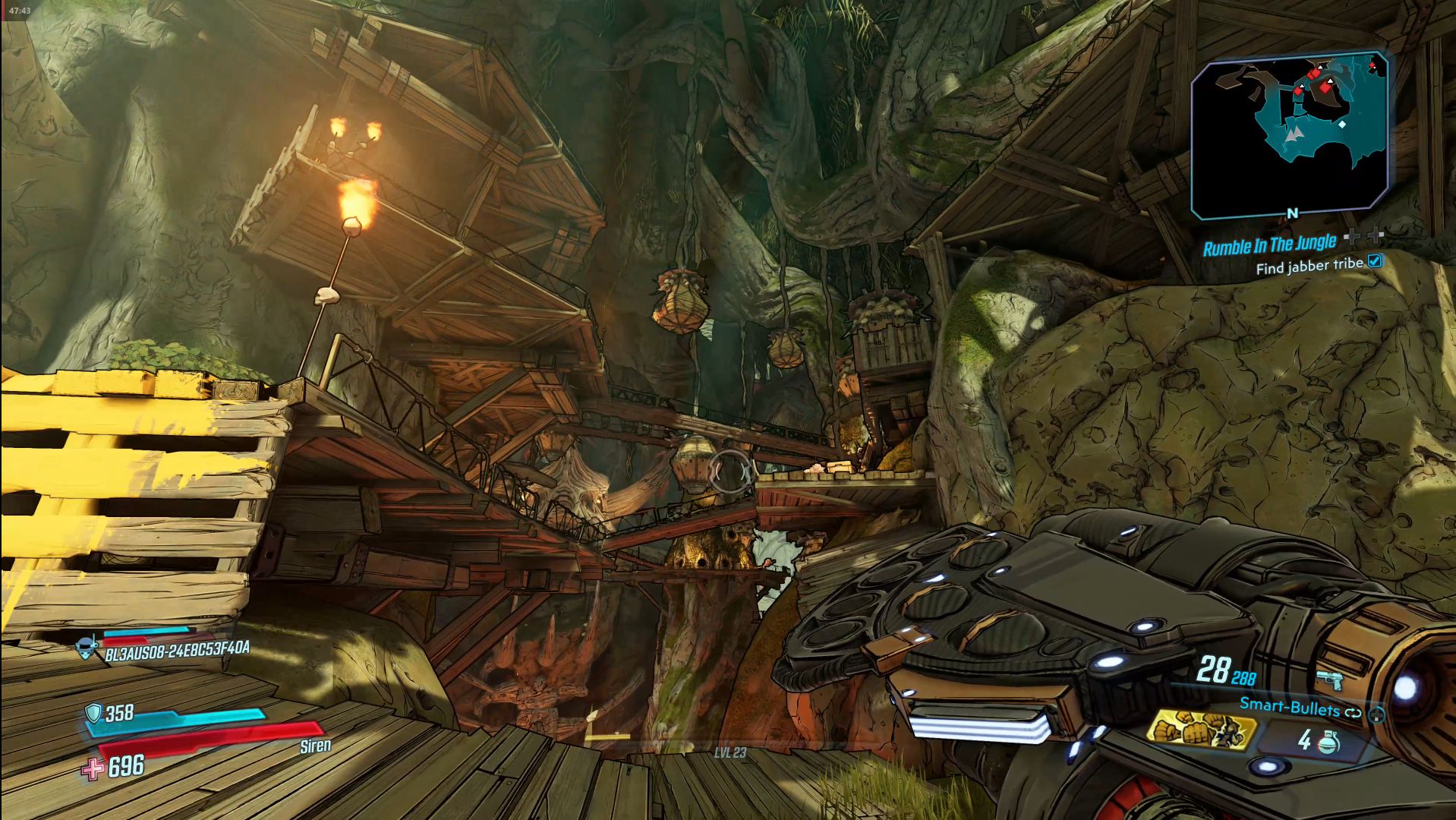 WP: Well then what is the process of designing an area in general for Borderlands?
WP: Well then what is the process of designing an area in general for Borderlands?
MH: So we start out with a rough idea of what the general mission is going to be, like a rough overview, maybe some concept art or a reference from either real world or other media. We then block out the level in really basic shapes that the player can run through. Once that is done and basic combat is in, we hand it over to the level artists who will cover up all of our blockiness with very pretty looking things haha, but still keeping the same basic design of the space. Then we work alongside the mission department to place objectives and spawn NPCs and place loot around the environments.
WP: [To Both] Borderlands 3 has unfortunately been mired in a lot of controversy, which is an unfortunate side effect with a lot of the things that are happening in the industry. Without going into detail of what those controversies are, have any of those events had any effect on the development of the game itself, or has it kind of just been closed off to all that?
MH: We’ve been sort of heads down, building the game and 2K has mostly taking care of it. The team at Gearbox has mostly been focused on making Borderlands 3 as great a game as it can be.
WP: We’ll quickly brush on the story. It seems like Borderlands 3 focuses a lot more on the characters compared to the previous games, where they felt more like accompaniment to the overall setting. What was the approach that the team took to crafting more identifiable and deep characters?
LM: You’re talking about the player characters, right?
WP: Yeah the player characters, they seem to have more interactivity with the world and different NPCs.
LM: Yeah I feel like these Vault Hunters have a lot of personality. They’re very different from each other.
MH: They now have VO [voice over] lines like what we had in the Pre-Sequel.
LM: Yeah and it’s always sort of fun to hear them talking back and forth and their, sort of, observations on the world.
MH: The situations they get stuck in.
LM: Yeah, they all have different takes on different situations and feelings on it. I think our narrative team did a really good job bringing these characters to life and their interactions with the NPCs. I love our NPCs. It’s been a few years since you’ve seen them and they’re in the new Borderlands and it’s really fun to see them returning and what they’ve been up to and all the changes since it’s been a few years, yeah.
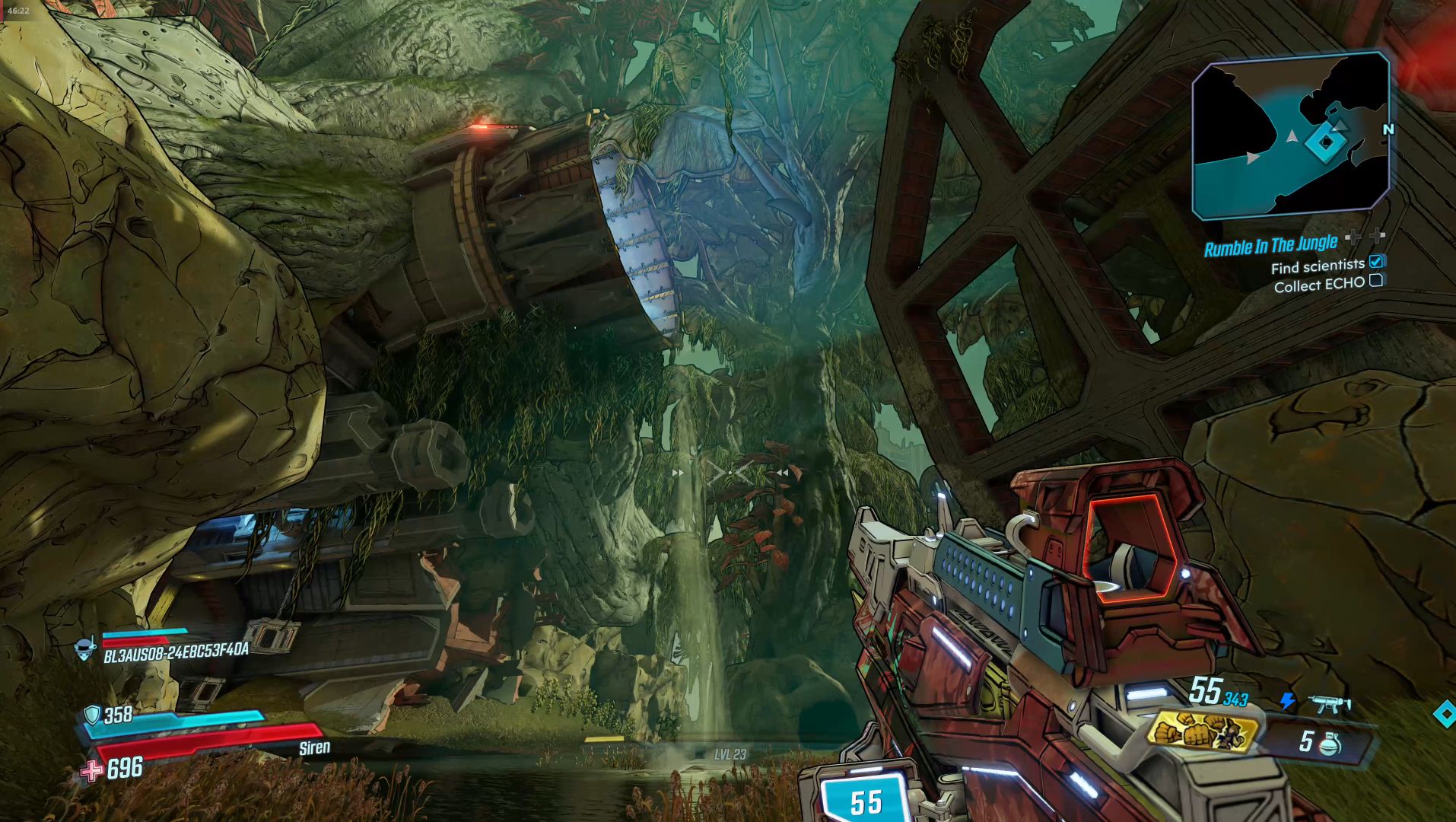 WP: Let’s finish with a fun question. What’s your favourite Vault Hunter?
WP: Let’s finish with a fun question. What’s your favourite Vault Hunter?
MH: Oh, that’s tough.
LM: That is the hardest question. We get asked that a lot. I have played all of them and, depending on my mood and which character, but I think my most recent play through I went with Siren. Her abilities, I really enjoy phaselocking stuff, so I think right now Siren is my favourite. They’re all very close, but Siren is just a little bit more in my opinion.
MH: I keep bouncing between Zane, The Operative and FL4K, The Beastmaster. I love the pets and interacting with them. Zane’s gadgets and being able to use two at once, not just the single one, so you can send out a drone at the same time as the digitone or the shield. Both are a lot of fun. The Siren and the Gunner are both pretty good. I’ll go FL4K haha.
LM: It’s really hard to pick one because they are all so different.
MH: Yeah, there’s much more variety this time around than in previous games.
WP: Yeah you can definitely tell with how they are designed. Anyways, thank you for coming in and answering some questions and good luck with the launch of Borderlands 3, I’m sure you’ll nail it.
Both: Thank you so much!
If you want my thoughts on the game itself, don’t forget to head over to the Borderlands 3 Preview to read what the game is all about ahead of its September 13 release date for PlayStation 4, Xbox One and PC. On a quick side note, I did ask about crossplay and the representatives of 2K had this to say:
We are certainly committed to bringing in crossplay. We are aware that’s something that fans want and as early as conceivably possible, we’d love to see it implemented. So, we are working with our partners at Epic to make sure that happens, when it’s feasible.
Jordan lives and breathes Dark Souls, even though his favourite game is Bloodborne. He takes pride in bashing his face on walls and praising the sun. Hailing from the land of tacos, he is the token minority for WellPlayed.




